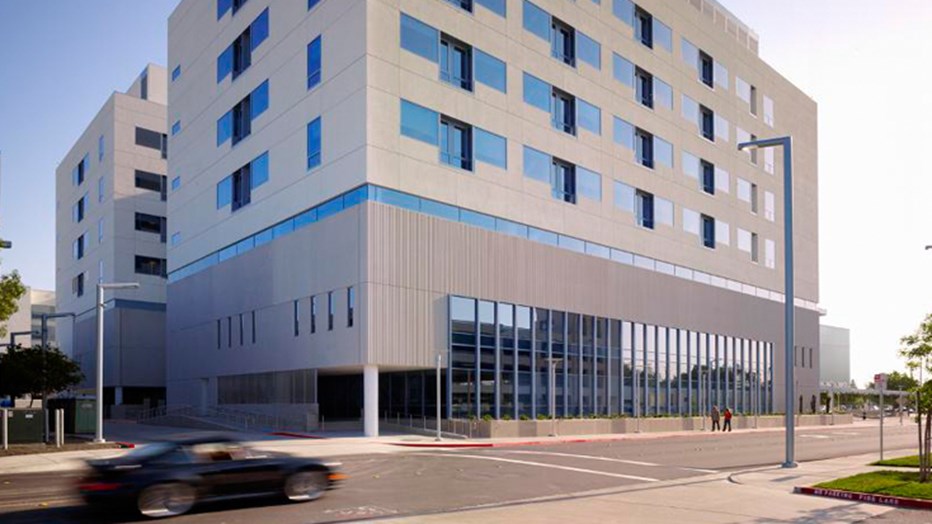$135 million new seven-story medical tower was added to a fully functioning campus. Scope included a partial basement, mechanical penthouse structure and three-story link structure totaling 376,000-SF. The tower contains 112 new patient beds and 18 operating rooms with peri- and post-operative recovery and support areas. The top two stories of the building were shelled for future expansion. Work on campus also included 10,000-SF of renovated space and site improvements, 28,000-SF central utility plant and 300-foot long pre-cast below-grade utility tunnel that connects the central utility plant to the north tower expansion.
Developing the project
In California, OSHPD (state governing/healthcare agency) plays an integral role in the design/construction approval process. Skanska was selected in 2002 (well into the design process) and permits started rolling out in late 2004 and into 2005. The timing of this created two challenges: the global cost escalation of 2004 and the selection of medical equipment. Skanska pre-purchased most of the steel materials to alleviate many of the issues due to escalation. Because of the timely buyout process, the acute care facility was built for $332/SF instead of the current prices of $550/SF to $700/SF. Since there was a lengthy design and permitting process, there were major equipment changes and revisions affecting the mechanical and electrical systems of 18 ORs, 112 patient rooms and 68 pre-op and post-op bays very late in the project. Through creative thinking and re-sequencing, the Skanska team facilitated a plan to allow the altered work to progress on a separate scheduling path, saving the project schedule several months. The project finished over budget because of significant client-initiated changes and related delays in receiving information from them.
Constructing the project
ICRA: Our addition connected to the existing facility at numerous locations. The client’s Infection Control Coordinator participated in our weekly OAC meeting for the duration of the project and this subject was discussed at every meeting. Pretask planning was always conducted and on-site daily (sometimes hourly) verification of barricades and protection was conducted in each area.


